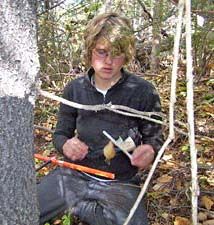Cedar Welsh
Dothistroma needle blight is an economically important forest disease which causes serious defoliation of many coniferous trees, particularly pine when planted out of their native range. The fungus responsible for the disease, Dothistroma septosporum (Dorog.) Morlet infects the needles, leading to necrotic lesions, needle death and reduced yield. Until recently, Dothistroma needle blight has been uncommon and of little concern in lodgepole pine (Pinus contorta) in western North America. Since 1997, severe damage to managed and natural stands of lodgepole pine has been reported from northwest British Columbia. Changes in weather conditions towards more frequent events of warm rains could be one cause of the current epidemic. The purpose of this research was to compare the influence of climate on the extent and nature of past D. septosporum outbreaks to understand the spatial and temporal variations of the disease in lodgepole pine-dominated forests of northwest British Columbia. The main objective was to reconstruct both outbreak history and climate through dendrochronological techniques to determine the relationship between climate and the historical outbreak dynamics of the disease.

|
Cedar Welsh
|
Masters Thesis: Climate and outbreak history of Dothistroma septosporum. 2007.
Current Position: Research Coordinator for Silverwood Consulting, Terrace B.C.